Featured on FOSS United
I presented this topic on the FOSS United Delhi February Meetup:
So if you’re coming from there, welcome! Here’s the Presentation PDF too if you missed it. The line “Finally, allow communication within VLANs” on Page 16 is incorrect; communication within a VLAN is permitted by default.
❓ What?
VLANs in Proxmox are a method to segment existing networking interfaces, bridges or bonds. If eth0 is the interface name, eth0.2 would be the vlan interface name where 2 is the vlan tag. The vlan tag 1 is reserved for untagged traffic and is often the default vlan in most networks, including Proxmox. VLAN IDs range from 0 - 4096.
❔ Why?
VLANs are used to separate traffic into different Broadcast Domains. This is useful in managing networking traffic, creating a logical separation between, say, different tenants on the same host. However, VLANs can also span multiple hosts if the hosts are connected by a switch with Trunk Port configuration. Intra-VLAN Traffic is permitted by default and Inter-VLAN Traffic is disallowed.
🎤 How?
Create VLANs
Assumptions
eno1- NIC
eno1.Z- VLAN on the NIC eno1 with a the VLAN tag Z
vmbrX- Bridge
vmbrX.Y- VLAN on the bridgevmbrXwith the VLAN tag Y
There are two ways to create a VLAN on Proxmox:
Transparent configuration
The VM’s virtual network device has to be assigned a network tag and the network device has to be marked VLAN aware.
-
Visit the Network tab under the node and create a Linux bridge:
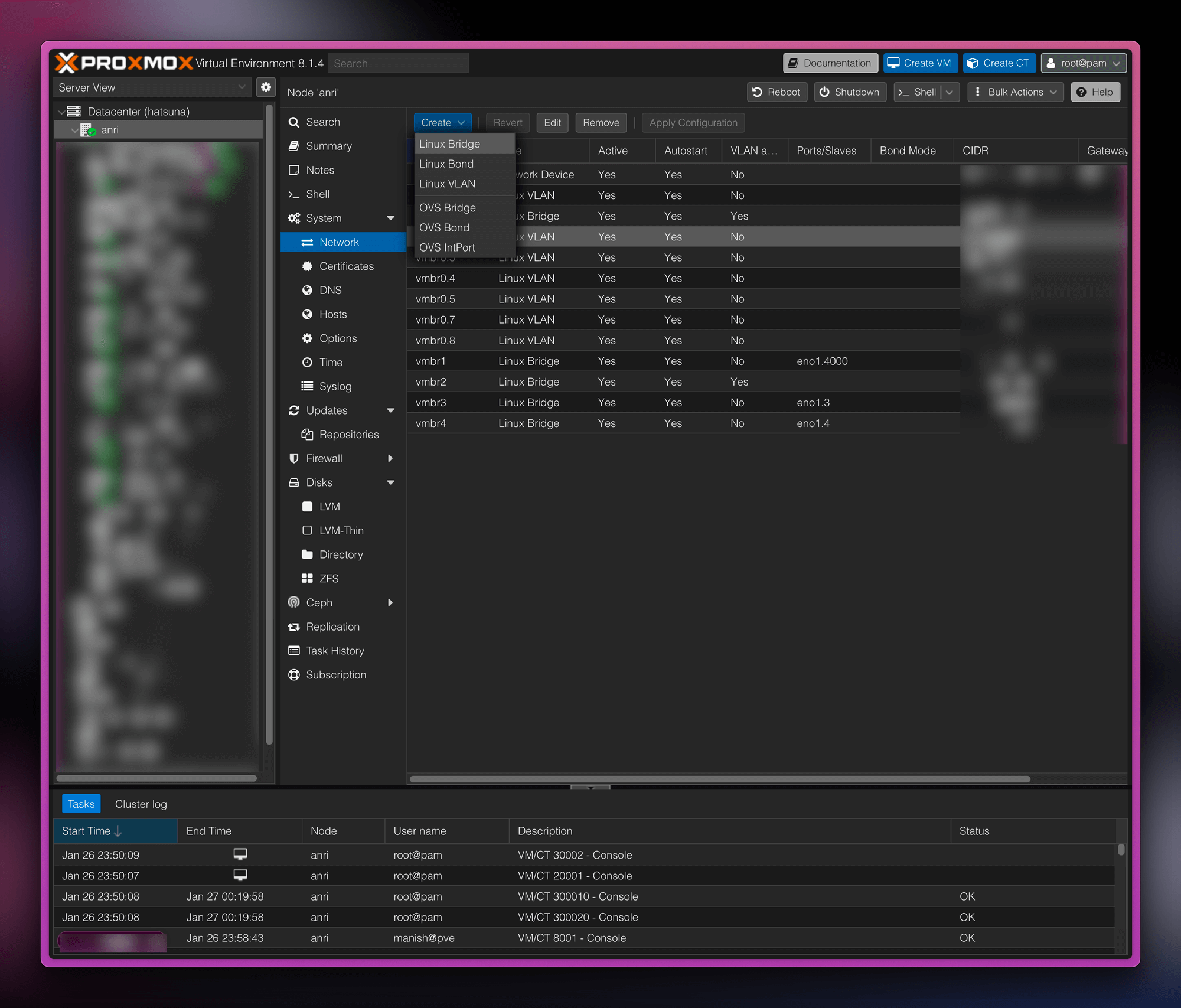
-
Tick the “VLAN Aware” box.
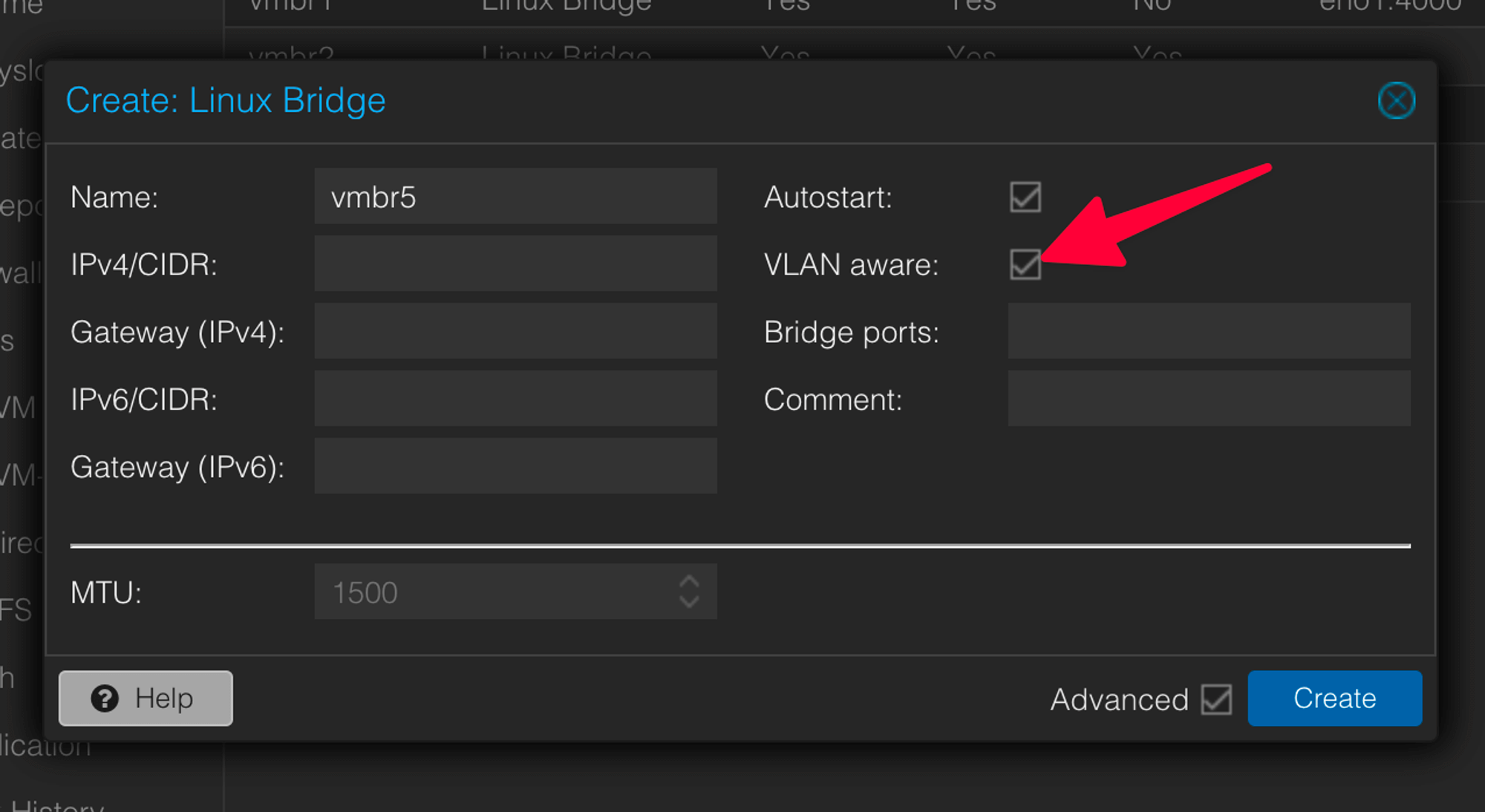
-
Create a “Linux VLAN” too as we want the Proxmox Host to do the routing. Here we want to define a subnet as the VM will be permitted to set an IP within this subnet.
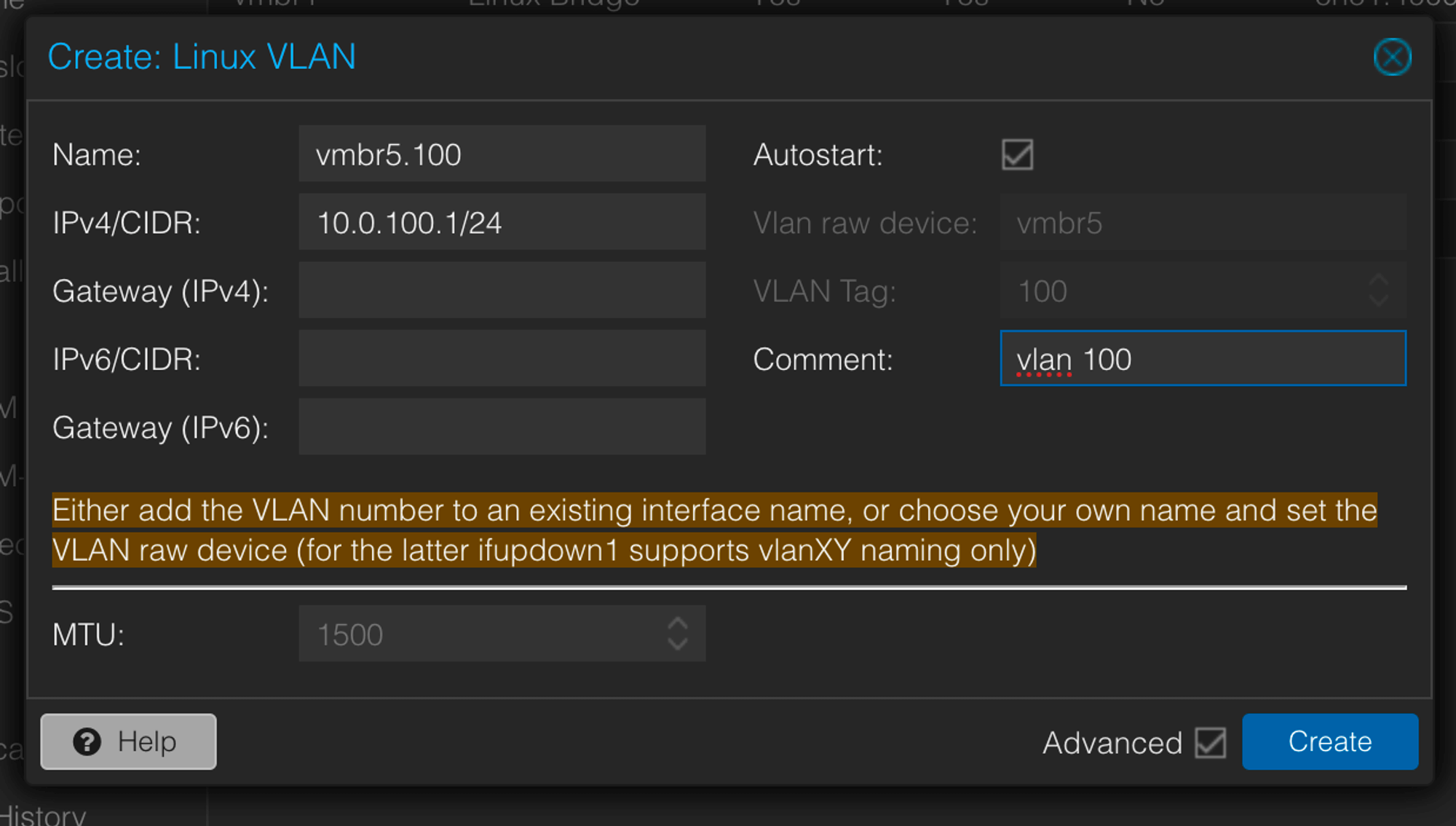
-
On the VM, goto the Hardware Tab. While creating the network device or editing a network device, add the vlan tag.
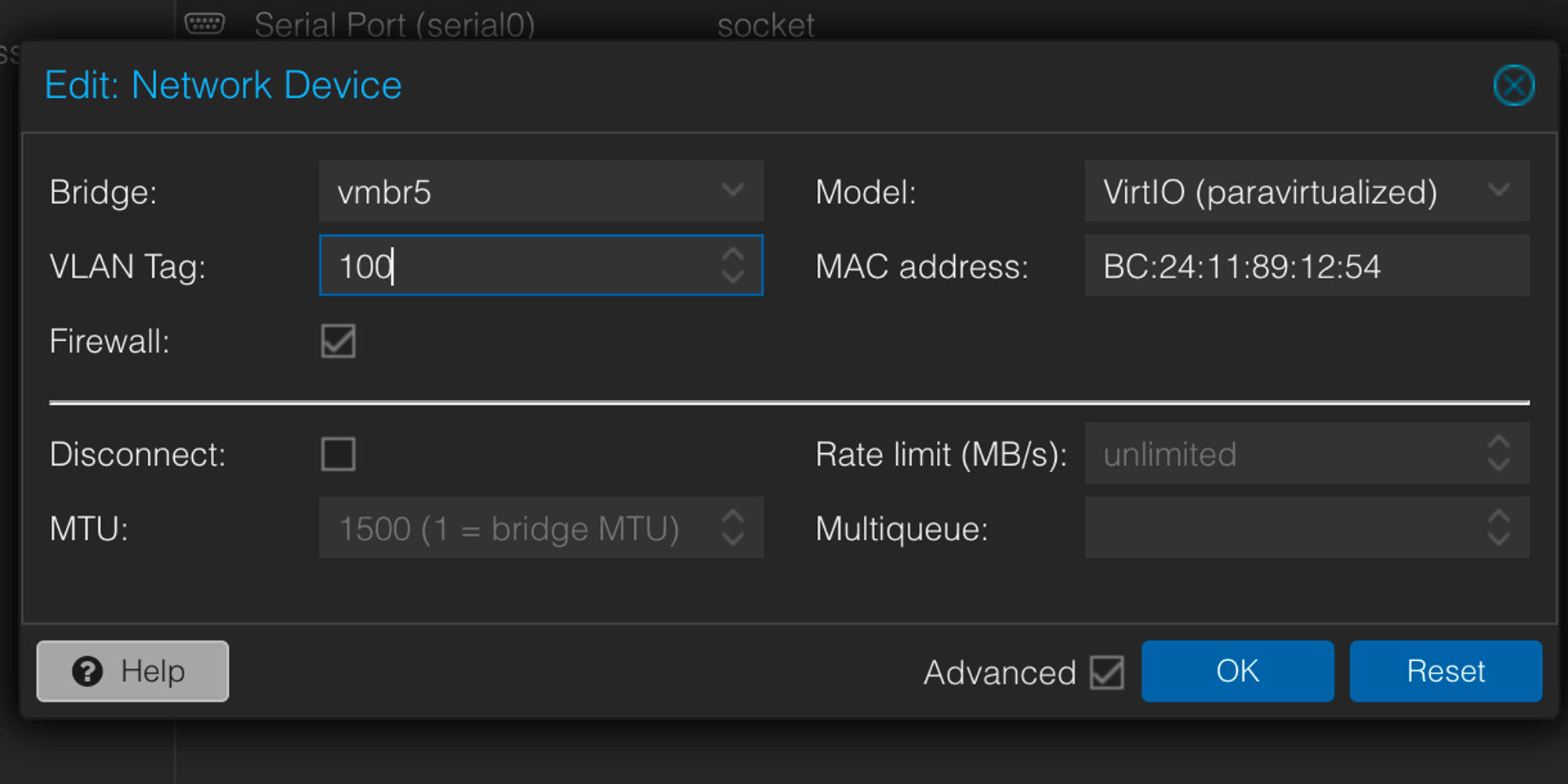
-
Under VM → Cloud-init, add IPs belonging the VLAN’s subnet to the VMs.
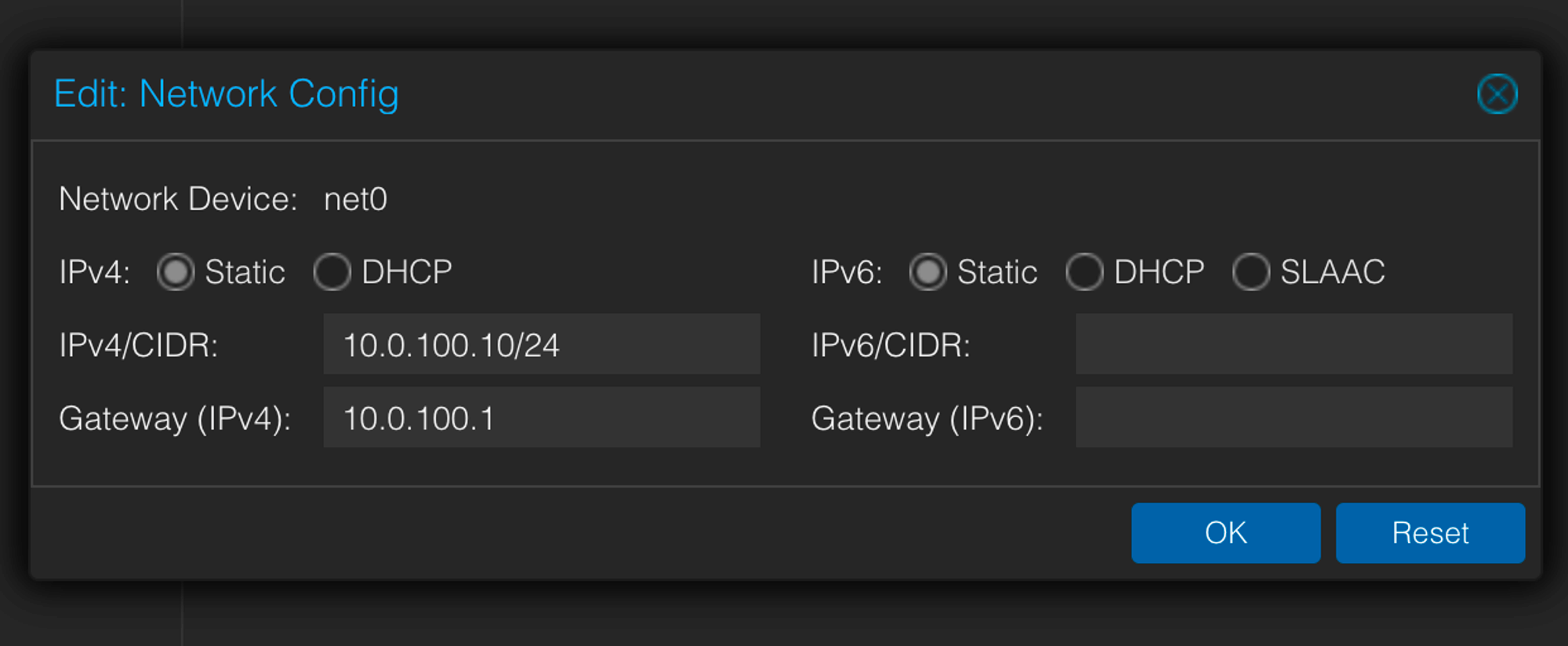
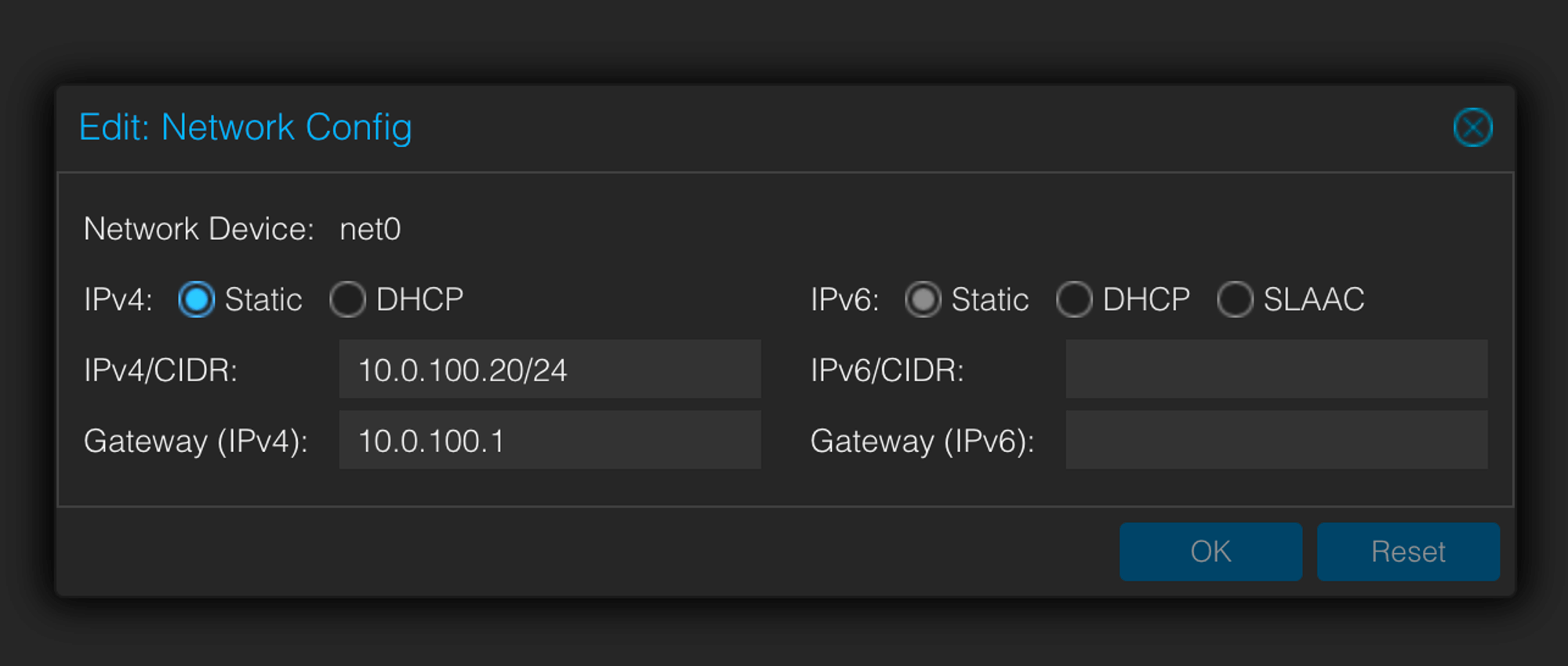
Make sure to click on “Regenerate Image” to apply changes.
-
Start both VMs and get them to ping each other.

Traditional configuration
The VLAN tagging is done directly on the interface and the VLAN interface is referred to by a linux bridge. This VLAN interface on the physical interface is created dynamically when the linux bride is active and is in use.
-
Create a Linux Bridge under System → Network that refers to a VLAN on the NIC:
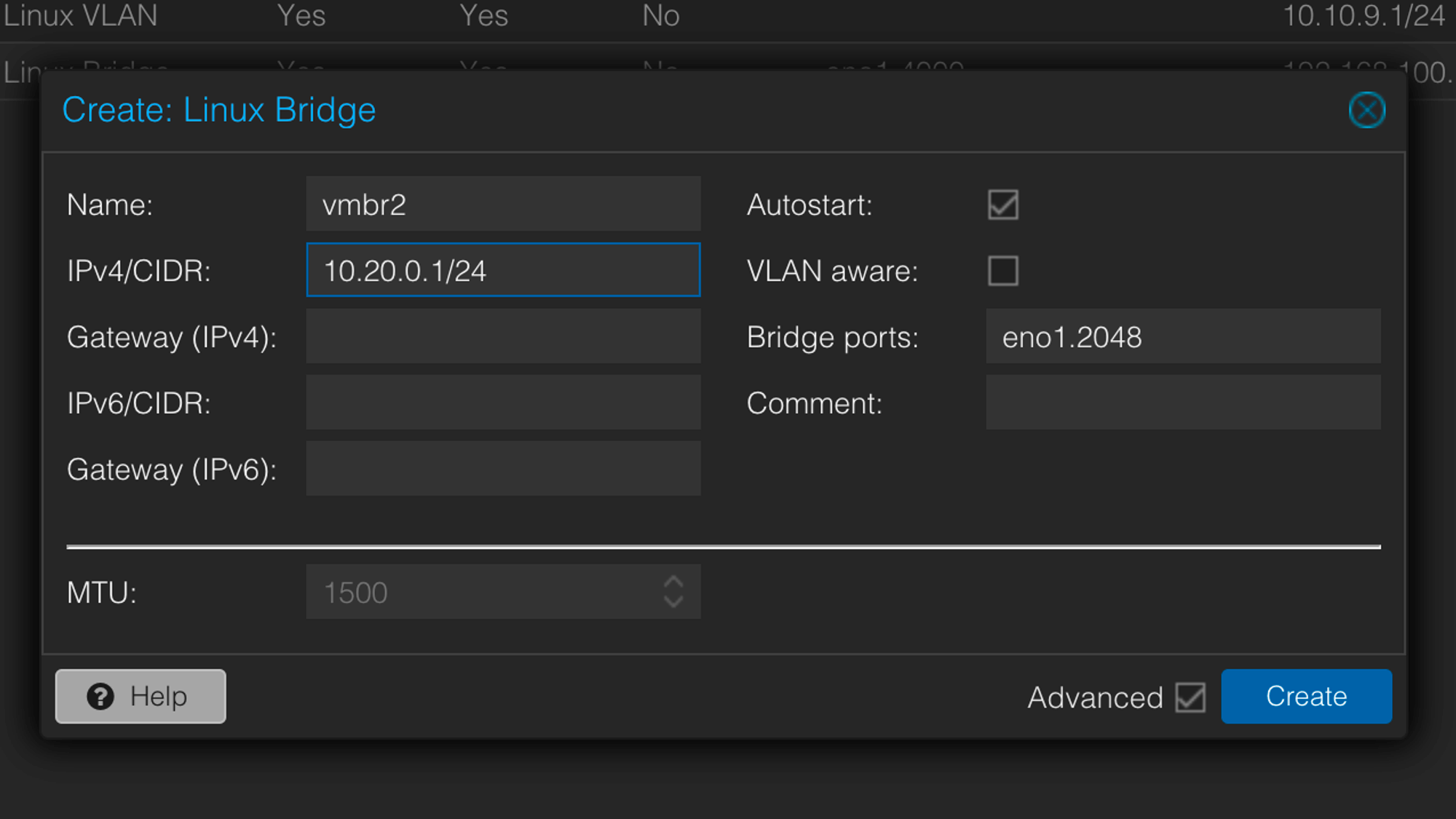
This time the bridge is not marked VLAN-Aware, as the tagging is done directly on the NIC. The bridge port here is the vlan tag we want to create on the NIC -
2048in this example.eno1.2048will be created and destroyed dynamically. -
Use the bridge
vmbr2on two test VMs to put them in the same VLAN. The VLAN tag on the VM itself is empty because the VM network device does not know it belongs to a VLAN, the bridge itself does.
-
Under VM → Cloud-init, make sure the VM has an IP that belongs to our VLAN bridge:
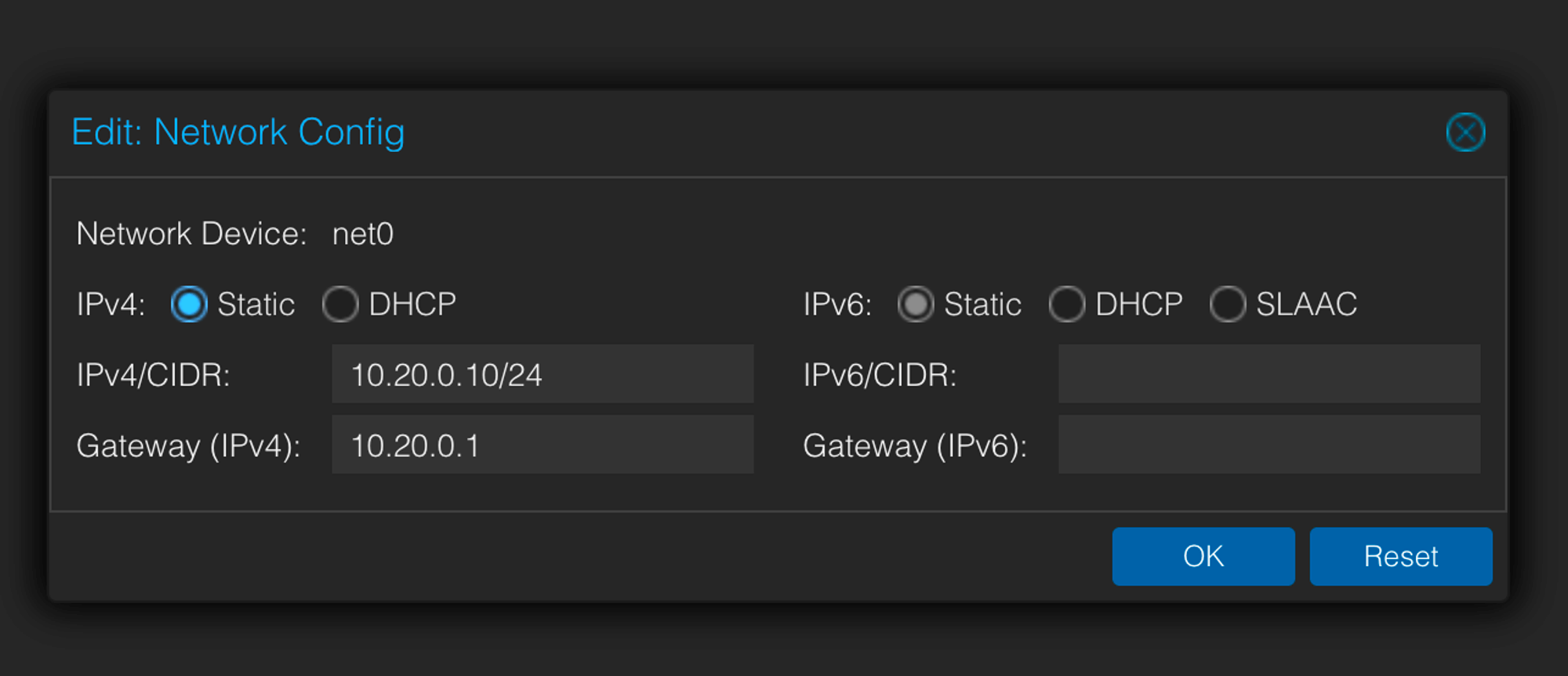

Make sure to click on “Regenerate Image” for changes to apply to the VM.
-
Start the VMs and try to ping each other.
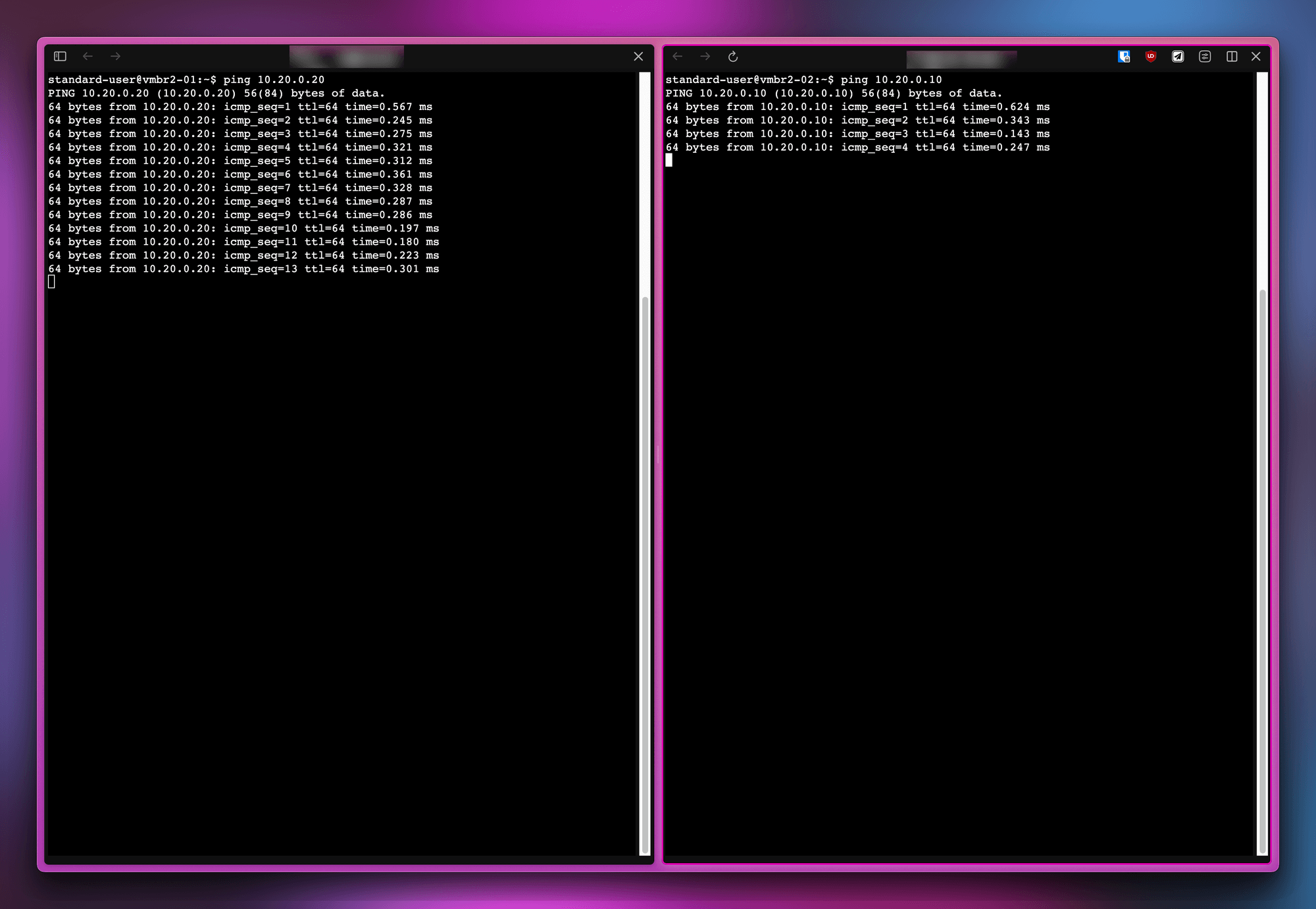
Why does inter-VLAN traffic work?
However, now that we have two VLANs (one on a bridge, one on a NIC), when we ping from one VLAN to the other…. this happens.

This is because of a sysctl property that makes IP forwarding possible. The property is disabled by default on Proxmox but for a routed configuration, where traffic has to be forwarded from one interface to another, it needs to be enabled everytime on startup like this:
echo 1 > /proc/sys/net/ipv4/ip_forwardOR permanently like this:
echo 'net.ipv4.ip_forward = 1' | sudo tee -a /etc/sysctl.d/99-tailscale.conf
echo 'net.ipv6.conf.all.forwarding = 1' | sudo tee -a /etc/sysctl.d/99-tailscale.conf
sudo sysctl -p /etc/sysctl.d/99-tailscale.confNow Tailscale docs mention a very important side effect of allowing IP forwarding:
When enabling IP forwarding, ensure your firewall is set up to deny traffic forwarding by default. This is a default setting for common firewalls like
ufwandfirewalld, and ensures your device doesn’t route traffic you don’t intend.
Thus, the host here acts like a router and forwards all traffic, even the unintended bits (between two VLANs).
Fixing inter-VLAN traffic
This can be solved by setting a default forwarding policy of DROP with iptables and then allowing traffic we intend to.
- Allow communication between the NIC and the bridge.
iptables -A FORWARD -i eno1 -o vmbr+ -j ACCEPT iptables -A FORWARD -i vmbr+ -o eno1 -j ACCEPT - Allow communication between the VLANs and the bridge.
iptables -A FORWARD -i vmbr5 -o vmbr5.+ -j ACCEPT Iptables -A FORWARD -i vmbr5.+ -o vmbr5 -j ACCEPT - Drop everything else
iptables -A FORWARD -j DROP
👓 References
7.4. FORWARD and NAT Rules Red Hat Enterprise Linux 4 | Red Hat Customer Portal
Subnet routers and traffic relay nodes
Explain the term broadcast domain, and what are multicast and unicast?
